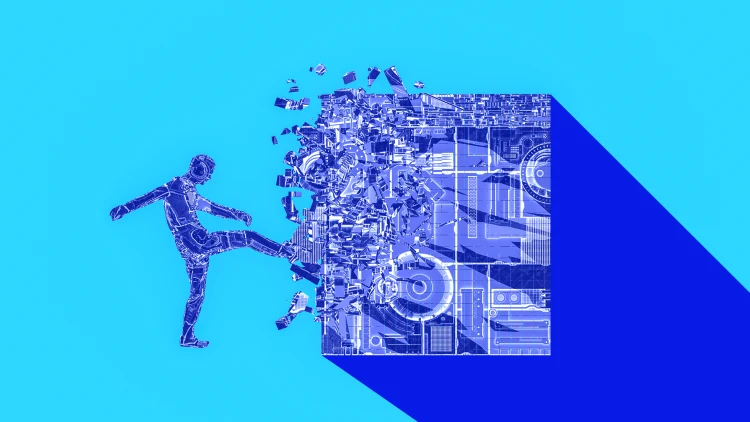As artificial intelligence (AI) becomes increasingly integrated into the workplace, a divide is emerging between executives eager to harness AI’s potential and employees who remain skeptical. While companies see AI as a means to improve efficiency and decision-making, workers fear job displacement and struggle with ineffective AI implementations. The friction highlights a crucial challenge: successful AI adoption requires trust from all stakeholders.
Table of Contents
ToggleTable of Contents
The Growing Divide Over AI Adoption
According to a recent survey by Writer, 94% of executives express dissatisfaction with current AI solutions, citing their inability to meet strategic goals. Conversely, nearly half of executives acknowledge that AI integration has led to internal discord within their organizations. Employees, on the other hand, often view AI as a disruptive force rather than an enabler.

- Fear of Job Loss: AI-powered automation has already replaced certain roles, leading to anxiety among employees about the future of their jobs.
- Lack of Trust in AI Decisions: Many workers feel that AI-driven decisions lack transparency and fairness.
- Frustration with Ineffective AI Tools: Employees report that some AI implementations fail to deliver the promised efficiency, creating additional workload rather than reducing it.
Case Studies: How Companies Are Navigating AI Skepticism
Some companies have recognized these challenges and are actively working to address employee concerns.
- Colgate-Palmolive’s AI Hub: The consumer goods giant has created an internal AI hub where employees can experiment with AI tools and customize them to their specific needs. This hands-on approach fosters trust and helps employees see AI as an asset rather than a threat.
- IBM’s Transparent AI Approach: IBM has introduced explainable AI models that allow employees to understand the reasoning behind AI-driven decisions. By improving transparency, the company aims to build trust in AI-generated recommendations.
- General Electric’s AI Upskilling Program: GE has launched extensive training programs to ensure employees can work alongside AI rather than feel replaced by it. The program focuses on AI literacy, enabling workers to leverage AI effectively in their roles.
Employee Resistance and the Rise of AI Sabotage
Despite these efforts, some employees have taken drastic measures to resist AI adoption. Reports indicate instances of workers intentionally feeding incorrect data into AI systems or bypassing AI-driven processes to maintain control over decision-making. This resistance stems from a fundamental lack of trust, often fueled by poor communication from leadership.
According to a report by Fast Company, employees actively sabotaging AI initiatives do so primarily for the following reasons:
- Unclear AI Strategy: When companies fail to explain why and how AI is being implemented, employees perceive it as a threat rather than an enhancement.
- Lack of Employee Involvement: AI projects designed without input from frontline workers often fail because they do not align with real-world workflows.
- Over-Reliance on AI: Some companies replace human decision-making with AI prematurely, leading to errors and frustration.
Mental Health Concerns in AI-Powered Workplaces
Another key issue that has surfaced is the impact of AI on employee well-being. A study from the Financial Times highlights how AI-driven automation can lead to isolation, reduced social interactions, and increased stress levels. Employees who feel micromanaged by AI algorithms often experience burnout and decreased job satisfaction.
Future Outlook: Bridging the Trust Gap
To ensure successful AI adoption, companies must focus on building trust through clear communication, transparency, and employee involvement.
Key Steps to Foster AI Trust in the Workplace:
- Transparent AI Decision-Making: Organizations must prioritize explainable AI to help employees understand AI-driven choices.
- Employee-Centric AI Implementation: Workers should be involved in AI development and deployment to ensure solutions address real needs.
- AI Upskilling Programs: Investing in AI education helps employees feel empowered rather than threatened.
- Balanced AI-Human Collaboration: Rather than replacing human roles, AI should augment human decision-making.
Conclusion
The success of AI in the workplace depends on trust. While executives are eager to push AI initiatives forward, failure to address employee concerns can lead to resistance, inefficiencies, and even sabotage. Organizations that prioritize transparency, upskilling, and clear AI strategies will be better positioned to reap AI’s benefits without alienating their workforce.
As AI continues to reshape workplaces, companies must strike a balance between technological advancement and human-centered implementation to ensure long-term success.




